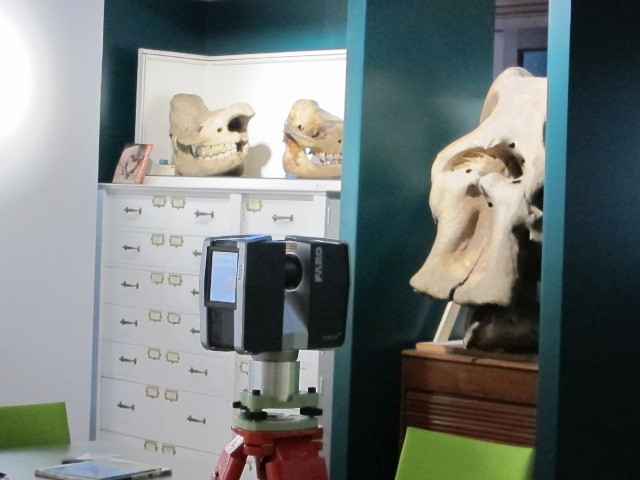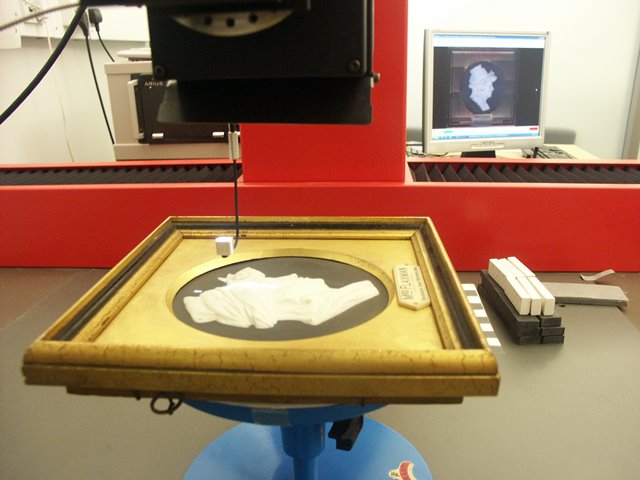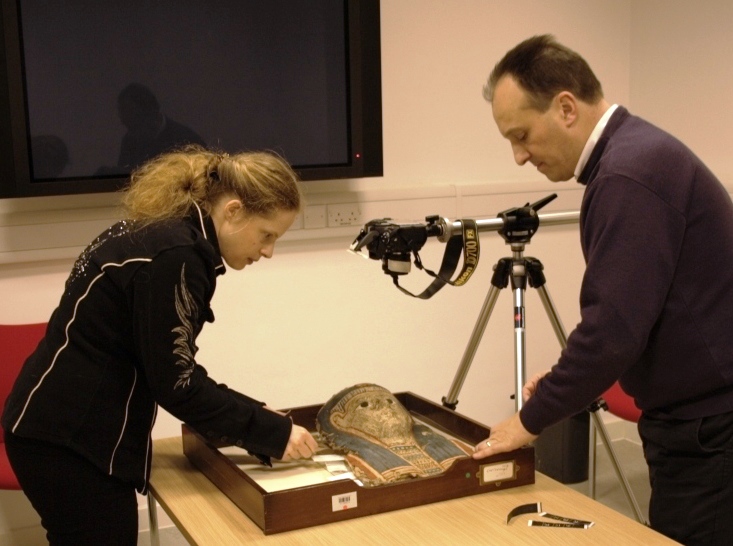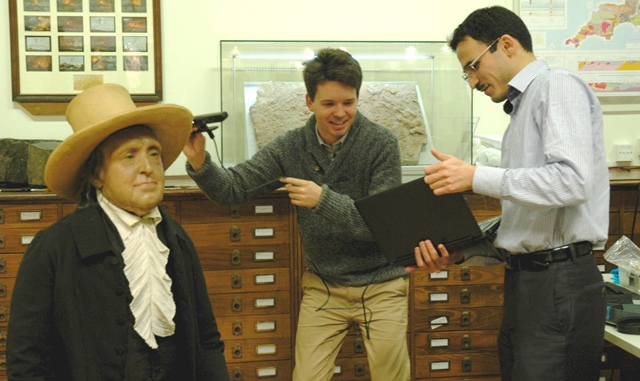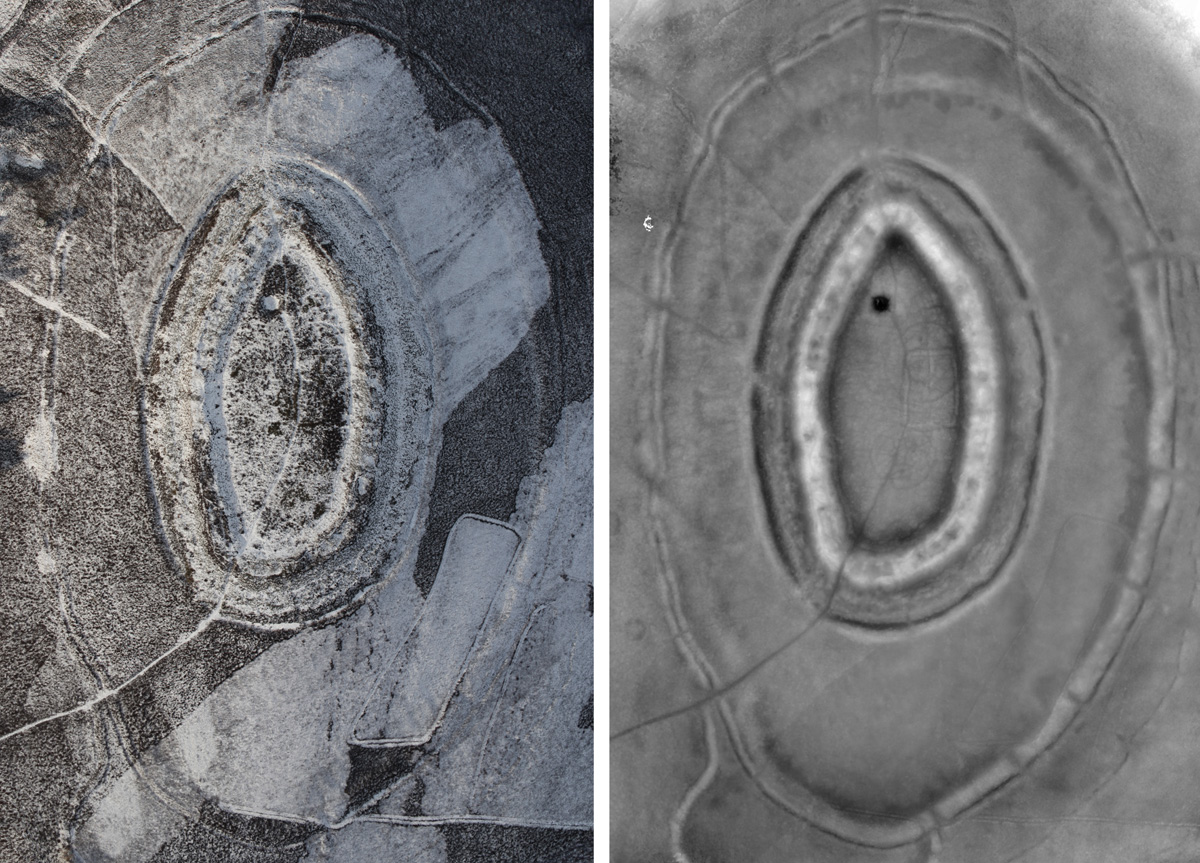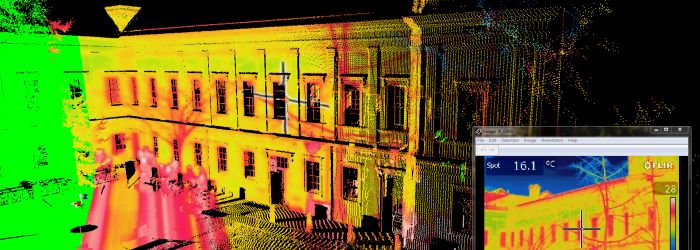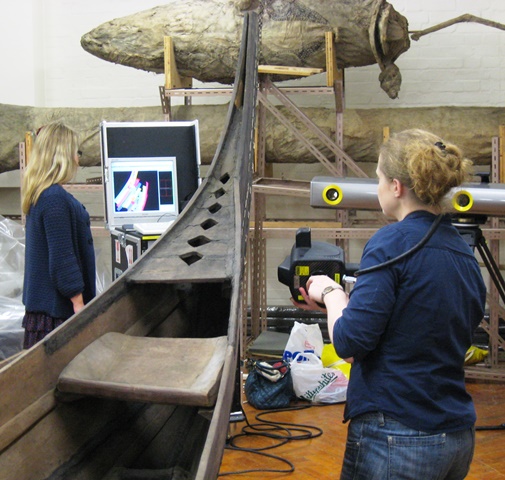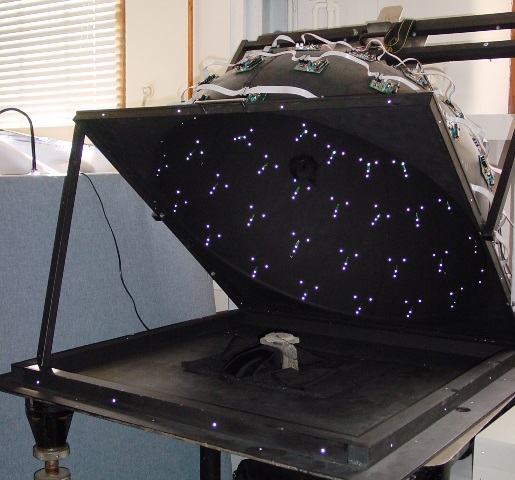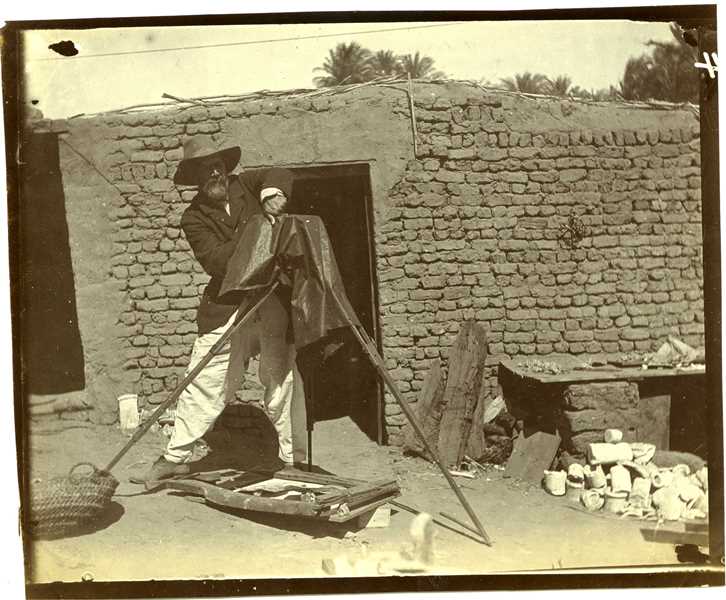
3D technology dates back to the early 19th century. In 1838 Charles Wheatstone invented the stereoscope, a device that creates the illusion of three-dimensional depth from two photographic images. In fact, Sir William Flinders Petrie, who excavated the artefacts in '3D Encounters: Where Science Meets Heritage', used the stereoscope to show patrons 3D views of the pyramids in Giza and other archaeological sites. Stereoscopy relies on the way the human brain and eyes interact. When each eye is presented with a similar but differently angled photograph, the brain fuses the two images into one, producing a three-dimensional picture: one with height, width and depth.
There are a range of technologies and mechanism that can generate 3D digital replicas of objects, buildings and spaces - most of which rely of photography, light and metrology (the science of measurement). Advances in photography mean that 2D images can now be used to reconstruct the 3D physical world in digital space. Laser technology can also be used to create digital reconstructions of 3D forms. The 3D digital replicas used in '3D Encounters: Where Science Meets Heritage' use 3D colour laser scanning technology by Arius3D Inc. and photogrammetry.
Sensors for 3D surface imaging fundamentally consist of a light source used for illumination, and one or more cameras which record the light reflected by the surface. In the manufacturing industry, accurate geometric recording is a necessity, and systems have evolved to conduct this. Alongside these professional systems sit low cost options where all that is necessary is a webcam and either a laser pointer or a data projector.
In choosing an approach, workflow has to be considered. The sensing system must be able to image the surface: this requires either the sensor or the object to be moved and rotated to bring each part of the object surface into the imaging field of view. Each change in geometry as the object is moved will enable the recording of a 3D surface patch, and the resultant set of surface patches must be exactly matched (registered) together in order to produce the complete 3D model. Additionally, noise in the 3D data must be filtered, colours balanced, and overlapping data removed. The third step is typically manual and includes the editing of any errors caused by interaction with light and surface properties, for example, laser spots that coincide with object edges and sharp boundaries result in a cut-off half spot or line which gives rise to a systematic error in the 3D data. Where the object surface is complex, holes due to surface occlusion may arise in the data and these can be optionally filled by interpolation.
Effective adoption of 3D technology is dependent on the development and understanding of sustainability and best practice. This is particularly true of the 3D digital object selection, modelling and visualisation chain where communication between disciplines is one of the key features. For example, how can dimensional standards, founded in the science of metrology, be translated into the visual assessment made by highly skilled professional curators? A sustainable future needs to develop best practice which can accommodate increases in the number, scientific value and on-line demand for 3D models, whilst capturing meta-data which details both their heritage and scientific provenance. What is certain is that such developments will need new professional skills that cross-link conservator and technician.
Please click in the case studies below to find examples of 3D imaging technologies used by the 'Photogrammetry, 3D imaging and Metrology research group at UCL.
Close



